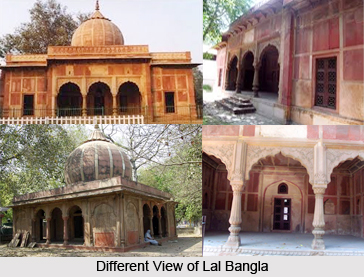 Lal Bangla, situated in Delhi, is an imperial late-Mughal mausoleum housing two ancient tombs. It is presumed that the extensive use of red and yellow sandstone for its construction may be the reason for the name of the mausoleums.
Lal Bangla, situated in Delhi, is an imperial late-Mughal mausoleum housing two ancient tombs. It is presumed that the extensive use of red and yellow sandstone for its construction may be the reason for the name of the mausoleums.
Location of Lal Bangla
The building is located on the Zakir Hussain Road in the complex of the Delhi Golf Club.
Historical Significance of Lal Bangla
Archaeological Survey of India has declared it as a protected monument since it"s a pious place which is home to two historical graves of Lal Kunwar (the mother of Shah Alam II) (1759-1806) and Begum Jan (his daughter).
Architecture of Lal Bangla
According to some historians, it was established around 1779-80. The architecture of Lal Bangla is elegant and graceful. The building is mainly constructed using Red and yellow sandstone. Various intricate designs can be observed on the walls of the building.
The mausoleum mainly consists of two square rooms in the centre and four rooms built diagonally which are parted by oblong halls in between. The monument stands on a red sandstone platform having rooms at corners. The dome of the mausoleum exhibits the neat late Mughal style of architecture with a pinnacle atop.
The tombs are structured with red sandstone. One of the rooms houses two graves which belong to the mother and the daughter of Shah Alam II namely Lal Kunwar and Begum Jan respectively. The second enclosure adjoining the first one houses three tombs belonging to the family of Mughal emperor Akbar Shah II. Within the premises the tomb of Syed Abid is also present which was established in 1036 AD.
The main gateway is also amazingly constructed with graceful designs. It is constructed with arched niches, sandstones brackets and octagonal chhatris on both sides. Presently, the building is surrounded by various trees which give it a serene and calm feel.
Entry to Lal Bangla
Entry inside Lal Bangla is not possible as there is no way one can enter. It lies locked and barricaded. However, with special permission from the Club authorities one can enter the premises and can view the building from outside.



















